When “Green Promises” Meet Red and Blue Reality
At first glance, the clean energy wave sweeping the United States looks like a breakthrough: factories popping up, solar farms expanding, EVs humming along. But look more carefully — especially in politically contested swing states — and you see a tension: how much of this is bold, lasting change, and how much is political theater?
This is more than academic. In swing states — the ones that decide elections — policy, money, and perception all collide. If a state is left behind, you’ll hear candidates promise greener futures. If it’s ahead, the risk is that gains become touted as proof of virtue, not results. Our question is simple: in these battleground states, since the Inflation Reduction Act (IRA) passed in 2022, have clean energy initiatives been substantive? Or are many of them symbolic?
To answer that, we’ll look state by state (Arizona, Georgia, Michigan, North Carolina, Nevada, Wisconsin, Pennsylvania), examine how federal and state incentives have been used, compare promises vs. outcomes, and evaluate the political and public dynamics that shape what gets built — and what just gets talked about.
The IRA’s Promise: A Policy Lever or Political Tool?
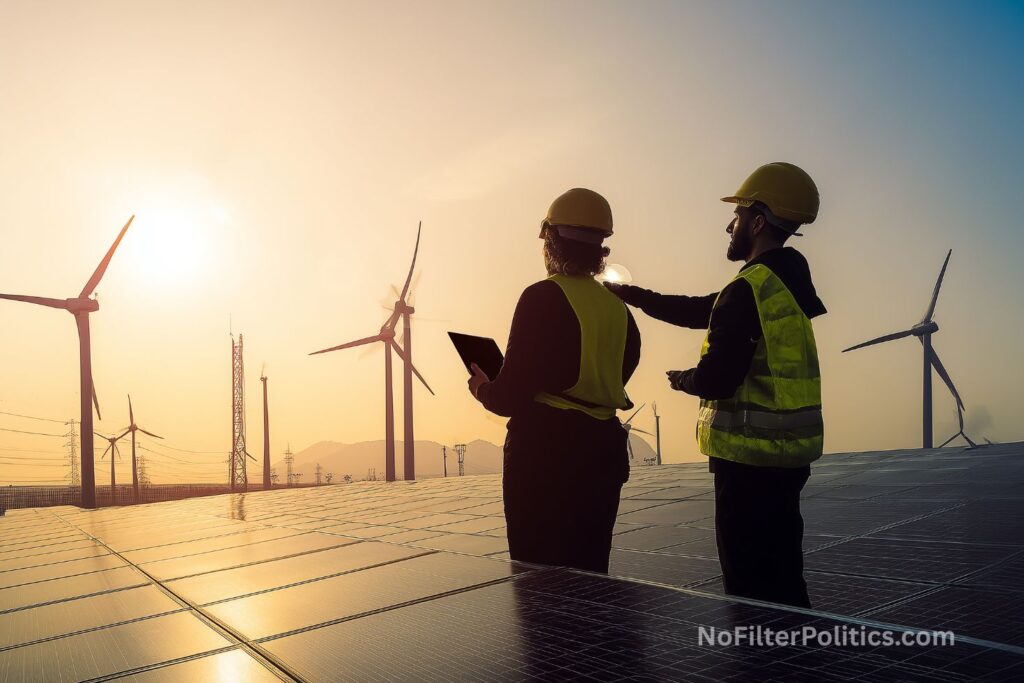
Before we dig into states, we need clarity on the tool that set all this in motion: the Inflation Reduction Act of 2022. Passed with major ambition, it allocated roughly $370 billion (by conservative estimates) toward climate, clean energy, and decarbonization priorities. It’s not just rhetoric: it rewrote the economics.
Key mechanisms include:
-
Production tax credits (PTCs) and investment tax credits (ITCs) for clean energy (solar, wind, storage), scaling with domestic content and labor bonuses.
-
45X and related credits for battery, EV, and clean-technology manufacturing, rewarding output rather than just investment.
-
Grants, loans, and matching funds for grid upgrades, transmission, energy storage, home efficiency, carbon capture, and hydrogen hubs.
-
Consumer incentives for heat pumps, electric vehicles, and efficiency upgrades in homes and small businesses.
Because many of these credits depend on building and producing — not just pledging — they place a premium on real investment and sustained output. In theory, that raises the bar: you can’t just issue press releases; you have to build factories, wire grids, permit projects, and hire people.
But—and this is where the tension lies—states differ sharply in how well they’ve converted IRA potential into real-world infrastructure. Some have grabbed every federal dollar and layered state-level rules and subsidies. Others have hesitated, obstructed, or just talked loud.
One compelling sign: of the clean energy manufacturing projects announced since the IRA, swing states account for nearly 44–48 percent of them. That means states like Georgia, Michigan, North Carolina, Nevada, Arizona, Wisconsin, and Pennsylvania are hosting nearly half the deals drawing new battery, EV, solar, or component factories. Analysts at Atlas Public Policy and others confirm that in both the last 24 months and in volume-of-investment terms, these states are disproportionately targeted. (It’s not magic: they have existing industrial ecosystems and geographies favorable to transmission and logistics.)
But that fact alone doesn’t prove substance. It sets the stage. The real task is tracing which states moved from announcement to construction, which layered strong policy frameworks (or failed to), and which ended up with more rhetoric than results.
Voter Sentiment: A Baseline of Demand
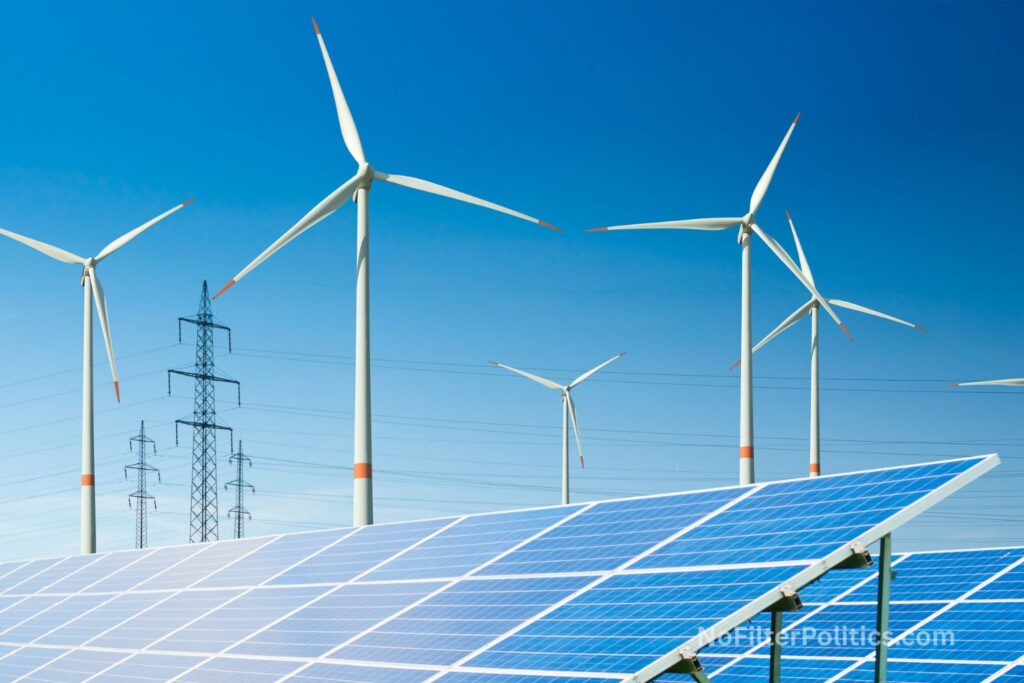
Before pols and developers respond, we should ask: is there public appetite for clean energy? The data — especially in swing states — suggests yes.
A multi-state analysis of public opinion in swing states showed that large bipartisan majorities support maintaining or expanding EV tax credits, public charging incentives, and clean energy credits more broadly. In those states, 73–81 percent of people backed keeping or increasing tax credits for EVs and charging stations. Repealing those credits garnered far less support (19–26 percent).
Meanwhile, in polls on energy priorities, many swing-state voters prefer investing in renewables over expanding natural gas or nuclear power. For example, in Michigan and Georgia, over two-thirds of respondents said renewables should be prioritized.
In short: voters tend to want clean energy options, at least at the level of incentives and visible infrastructure. The leadership question is whether governments act in line with that demand — or whether they use it rhetorically.
Swing-State Profiles: Substantive vs. Symbolic
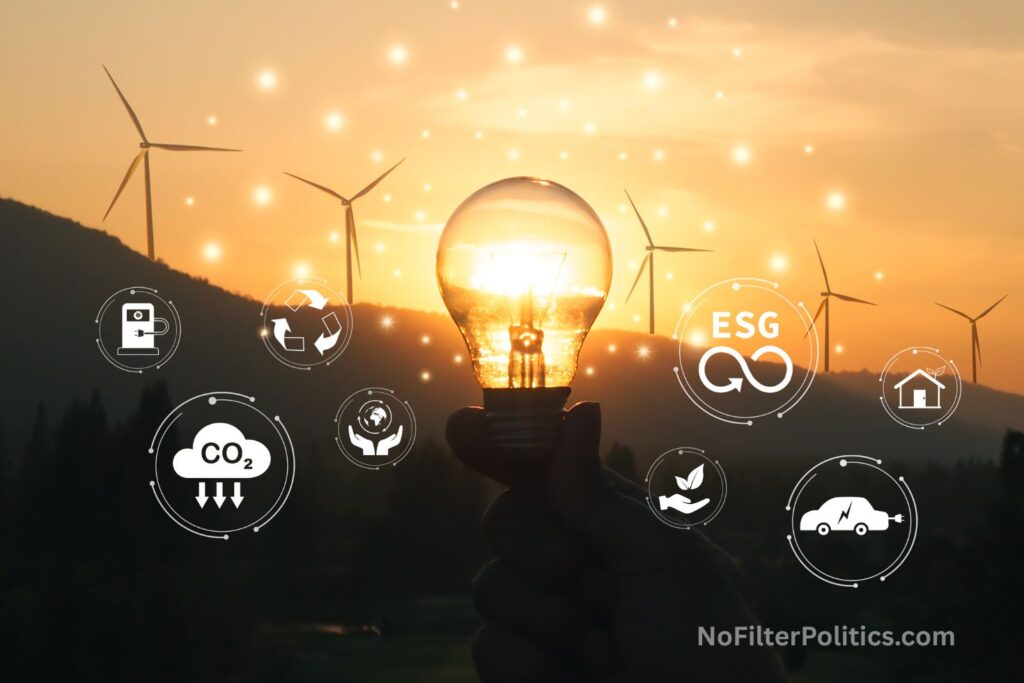
Below is a state-by-state dive. In each case, we assess four dimensions: policy intent, private/federal investment execution, on-the-ground impact, and political framing.
Michigan: Policy + Execution = High Stakes
If any swing state shows what real alignment looks like, it’s Michigan. Under Governor Gretchen Whitmer, the state pushed forward both ambitious laws and industrial investment.
Policy Intent
In 2023, Michigan passed a comprehensive clean energy and climate law: 100 percent carbon-free electricity by 2040 (with interim targets), a mandate for energy storage, utility reform, and streamlined siting for generation projects. That signals intention baked into statute, not just announcements.
Investment Execution
Numerous battery and EV projects are underway or committed. Major automakers (GM, Ford) are pivoting plants to electric models; battery factories (Ultium, joint ventures) are expanding. Michigan’s capacity to repurpose its existing auto supply chain gives it a running start.
On-the-Ground Impact
Factories are under construction. Local construction jobs are appearing. Utilities have already filed new resource plans that assume coal retirements, increased wind/solar, storage additions, and grid upgrades. The clean energy law gives regulators and utilities a roadmap and accountability structure.
Political Framing
Whitmer frames clean energy as economic competitiveness, not an ideological crusade. Republicans in the state legislature have occasionally raised alarms over costs or Chinese investment, but they can’t credibly resist factory jobs and investment when their districts are in the mix.
Caution Flag
However, recent moves raise red flags: in mid-2025, Whitmer replaced a clean energy advocate on Michigan’s Public Service Commission with an industry-aligned appointee. Critics worry that raises downstream pressure on rate structures, oversight, and policy direction. Some fear the defensive move could shift regulatory balance away from aggressive renewables. (A utility-friendly PSC can slow or re-interpret mandates even under law.)
So Michigan sits near the “highest substance” tier. The test: whether its policy foundations survive regulatory shifts, utility pushback, and future administrations.
Georgia: Jobs-First, Climate-Later — But With Real Results

Georgia is a case study in how a state can lean into clean energy via industrial investment even in a traditionally conservative environment.
Policy Intent
Georgia has not passed sweeping new climate mandates or renewable portfolio standards. The state’s political class is cautious about framing projects in environmental terms. But behind the scenes, incentive packages are generous, site-prep is streamlined, and outreach is aggressive.
Investment Execution
Georgia has landed some headline projects: a major EV “Metaplant” near Savannah, multiple battery plants, expansions in solar manufacturing (Qcells, etc.), and supply chains feeding those plants. These are not small deals; they come with multi-billion-dollar price tags and thousands of jobs.
On-the-Ground Impact
Steel beams are rising. Contractors and auxiliary firms are moving locally. Utilities like Georgia Power are integrating more large-scale solar and battery capacity because the economics, aided by IRA credits, are favorable. The change in generation mix is slow but gradually relevant.
Political Framing
Kemp and Georgia officials barely mention “climate.” They talk about economic development, jobs, and Georgia’s competitiveness. That works in their favor: the initiative becomes less polarizing and more like a business bet than an ideological threat.
Caution Flag
Projects are capital-intensive and sensitive to incentives. If federal credits are cut or economic conditions shift, the risk is that momentum stalls. Also, the absence of binding climate law means gains could be reversed or slowed if a future government changes priorities.
Georgia is a strong “substance via pragmatism” model: modest policy, big execution.
North Carolina: Bipartisan Infrastructure with Long Tension
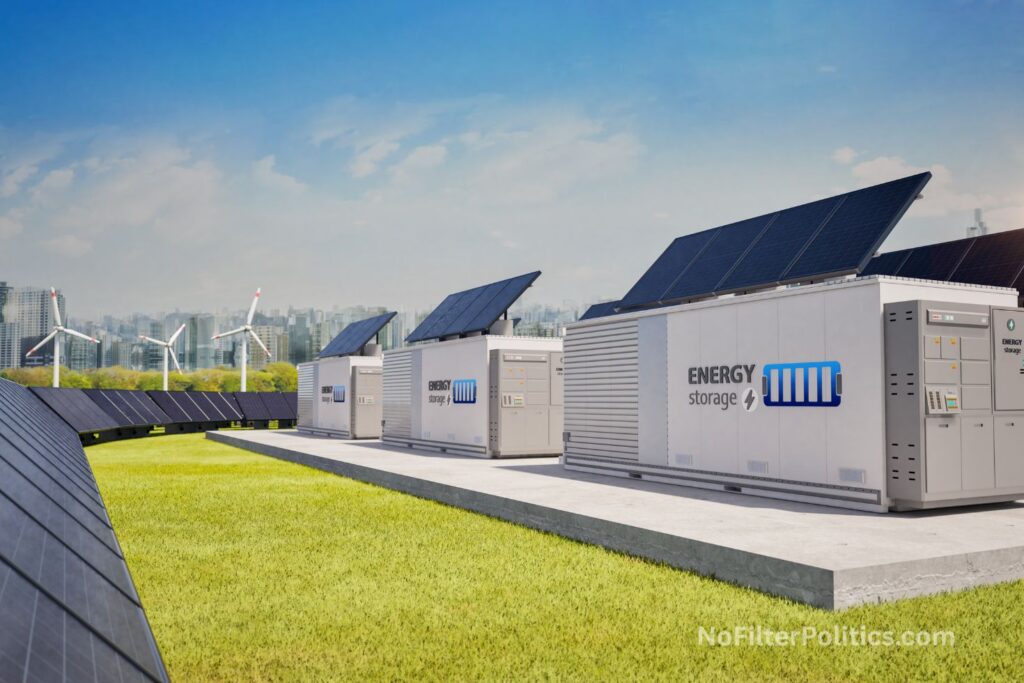
North Carolina shows that a state can balance political controls and still make substantive strides — though not without tension.
Policy Intent
NC passed HB 951 before the IRA, committing to significant CO₂ reductions in the power sector and carbon neutrality goals. Utilities are being pushed to align with those targets. The regulatory structure has to interpret and enforce those goals. Offshore wind, while nascent, is included in the ambition.
Investment Execution
The state has pulled in massive commitments: battery plants, a semiconductor component factory, EV-related manufacturing, and expansions in clean tech supply chains. The Raleigh–Durham–Greensboro region’s innovation ecosystem helps too.
On-the-Ground Impact
Solar capacity is growing rapidly. Regulators are approving new interconnections. Duke Energy and other utilities have new resource plans assuming more solar, storage, and less fossil reliance. Grid upgrades and EV charging corridors are in early deployment stages.
Political Framing
The governor and state leaders frame clean energy as both climate and competitiveness — but the legislature leans to the economic side more. That political balance creates friction but has prevented large-scale rollback. There’s tension in budget fights over how much tax incentive support to allow and how fast to move renewables vs. natural gas or nuclear backup.
Caution Flag
Interconnection bottlenecks remain a barrier. Offshore wind is an ambitious bet with significant permitting risk. If markets or utilities resist, the rollout could lag planned timeframes. The framing is solid but must deliver to stick.
Arizona: Executive Action, Solar Gold, and Battery Ambitions
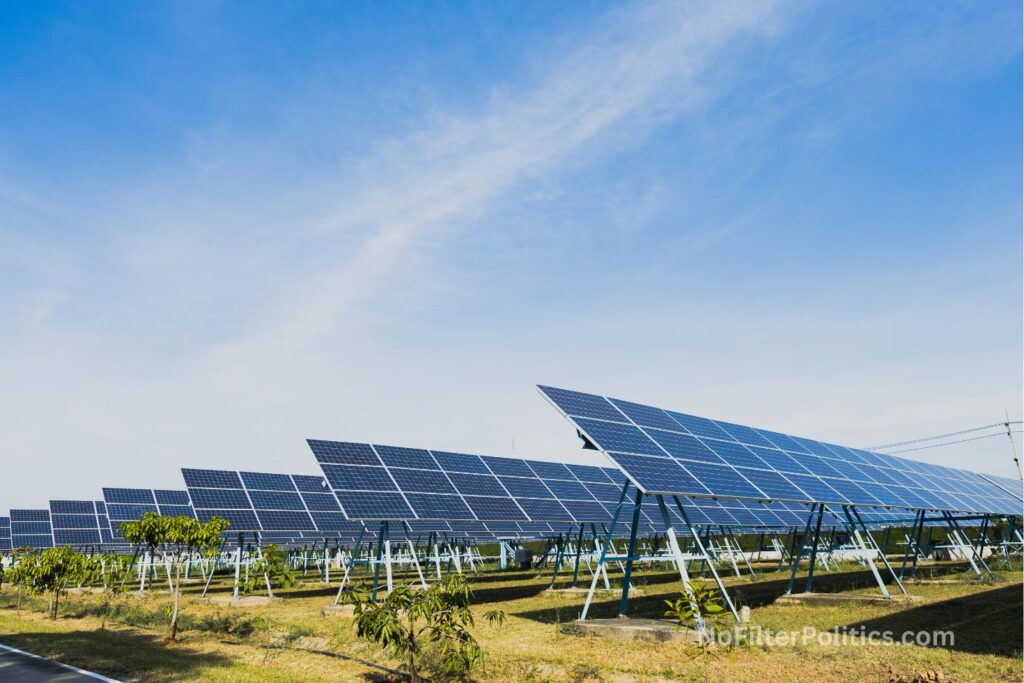
Arizona’s geography gives it solar potential, and its business climate attracts manufacturing. Its political alignment is currently mixed, so execution must rely on incentive structure more than philosophy.
Policy Intent
The legislature (with GOP control) has historically resisted deeper regulatory climate work, but the executive branch (under Governor Hobbs) has used executive orders to ease permitting, join interstate climate alliances, and push tribal solar development. It’s a path of bureaucratic push, not sweeping law.
Investment Execution
Arizona has landed battery cell plants, recycling facilities, EV-related investments, and solar farms. The pipeline is robust. Some projects were delayed or restructured, but overall the sector is active. Solar + storage pairings are being pursued by utilities eager to optimize peak rates.
On-the-Ground Impact
Projects under construction, contractors on site, utility-scale solar projects being permitted, and household solar/efficiency uptake rising. Grid upgrades and line expansions have been planned. Some local communities see lease payments from solar development.
Political Framing
Arizona’s leadership speaks of “innovation,” “jobs,” “energy independence.” They minimize climate verbiage. That’s intentional: by keeping the frame business-first, they reduce political friction. Clean energy becomes a competitive bet, not an ideological wedge.
Caution Flag
Legislative pushback or administrative reversal could slow permitting or regulatory consistency. Some projects (battery plants, grid lines) depend on subsidies that, if cut, make margins thin. Carbon reduction gains will lag manufacturing gains unless generation expands in sync.
Arizona is mid-tier: strong execution in many places, policy backing via executive power, but undercut by weaker legislative protection.
Nevada: Solar, Lithium, Recycling — A Clean Supply Chain Hub
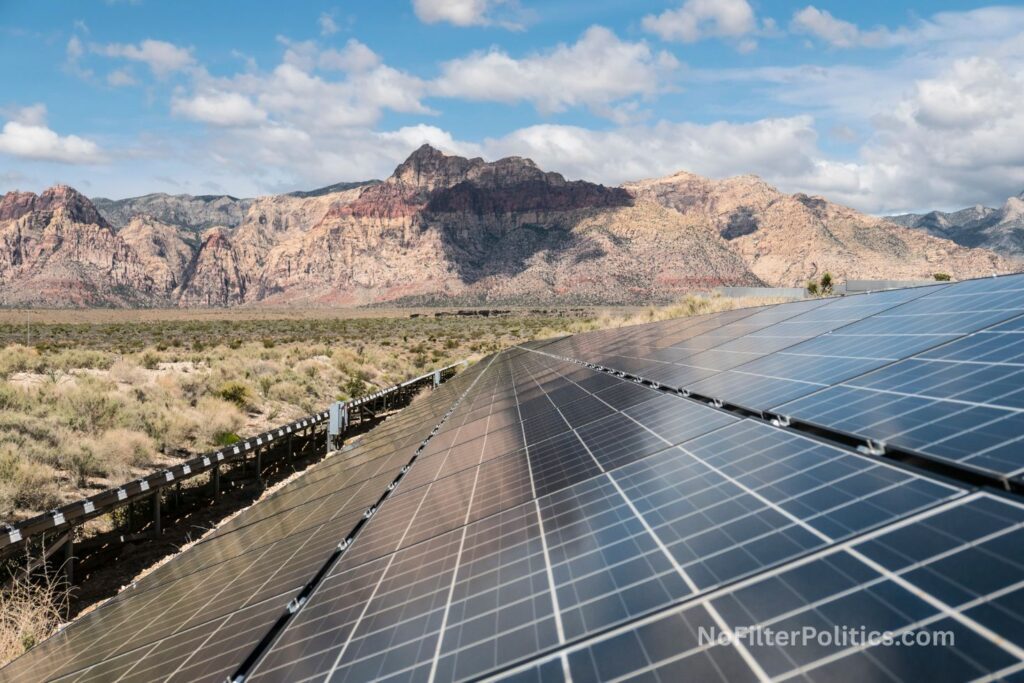
Nevada has both the renewable resources and the mineral assets to play a critical role in future energy supply chains. The question is whether it can turn that potential into durable infrastructure.
Policy Intent
Nevada already had a 50 percent renewable portfolio standard by 2030. The state helps facilitate solar projects via permitting, land use, and regulatory support. The governor’s office is less centered on climate rhetoric but helps push through projects.
Investment Execution
Large-scale solar + storage projects are underway (e.g., Gemini solar + storage). Tesla’s Gigafactory near Reno is expanding battery cell manufacturing. Redwood Materials is building a recycling facility in the state. Lithium extraction (e.g., Thacker Pass) is being developed with DOE loans and IRA-linked backing. The idea of a “lithium loop” — mine, refine, recycle in the same state — is emerging in real-world plans.
On-the-Ground Impact
Mega-solar farms are being built or permitted. Battery factories expanding. Recycling plants hiring. Lithium mining operations breaking ground. Utilities plan to retire coal plants and rely on renewables plus storage to fill demand. Victories include lower peak power costs and more stable dispatchable power.
Political Framing
Officials talk infrastructure, modernization, and energy security more than carbon reduction. Still, because Nevada’s economy is tied to energy costs (for Las Vegas, for instance), clean power has direct public benefit. That makes the push less abstract.
Caution Flag
Mining and extraction bring environmental opposition (water, habitat impacts). Pulling lithium or raw materials can draw legal challenge or tribal resistance. Projects may proceed slowly in rugged terrain or remote areas. But compared to many states, Nevada has more of the building blocks lined up — making it one of the more promising battlegrounds for genuine clean supply chain development.
Wisconsin: Quiet Progress Under Regulatory Pressure
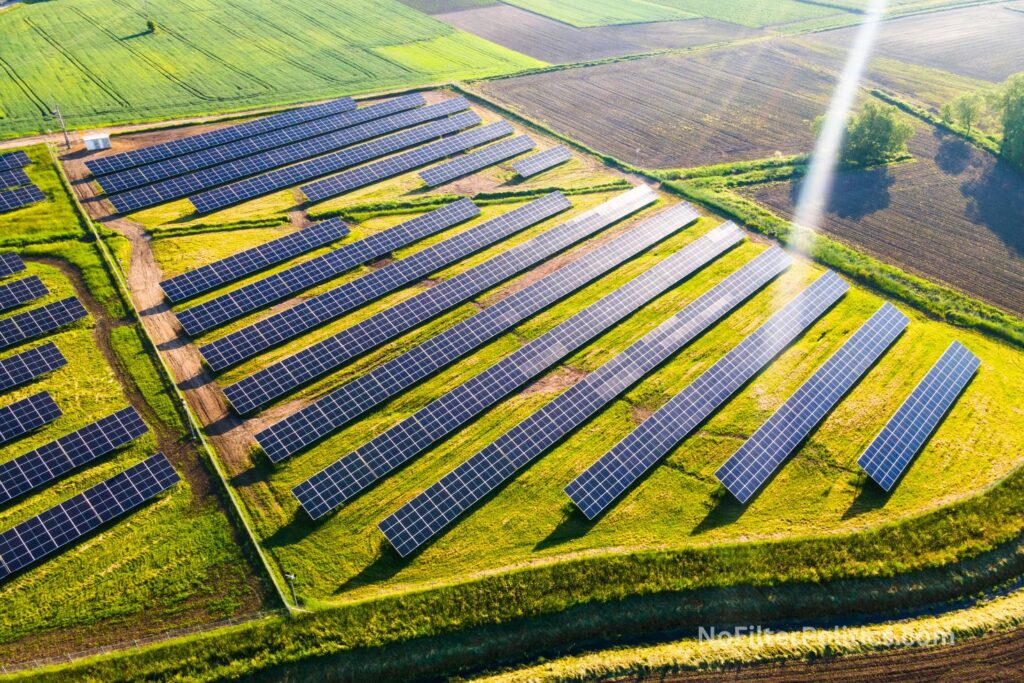
Wisconsin’s politics are more polarized and its legislature more reluctant to pass bold climate law. But progress is happening via regulatory paths and market dynamics.
Policy Intent
Governor Tony Evers has proposed ambitions (100 percent carbon-free by 2050) and issued executive strategies, but legislative partners have not codified many mandates. The utility regulatory path has more traction than sweeping statutes.
Investment Execution
Since 2022, according to one analysis, Wisconsin has attracted ~$3.7 billion in clean technology and infrastructure investment. Solar farms have been approved, and a long-dormant recommitment to wind has reappeared — the first utility-scale wind projects in years are being approved. Utilities are filing new plans with renewables and storage. Efficiency programs are being updated.
On-the-Ground Impact
Solar capacity is growing across rural counties. Some wind projects are going through approval after local resistance is navigated. Grid upgrades are beginning to absorb new generation. Local contractors are seeing more clean energy work. In short: motion is visible.
Political Framing
Evers frames this in terms of energy cost, grid resilience, and job growth. Republicans talk about “reliable energy” and resist mandates but often do not (yet) block solar from being built. Civic acceptance is stronger in places that see clarity in local benefit (leases, local jobs).
Caution Flag
Without binding statutory mandates, the path depends heavily on regulators and utility willingness. If a future legislature reverses or underfunds key programs (or blocks rate designs that favor renewables), growth could slow. Also, wind faces severe NIMBY challenges in Wisconsin’s terrain and agricultural counties.
Wisconsin is a “slow-but-steady” case. It leans substantive over symbolic, but less aggressive than coastal or Sun Belt states.
Pennsylvania: High Potential, Deep Inertia
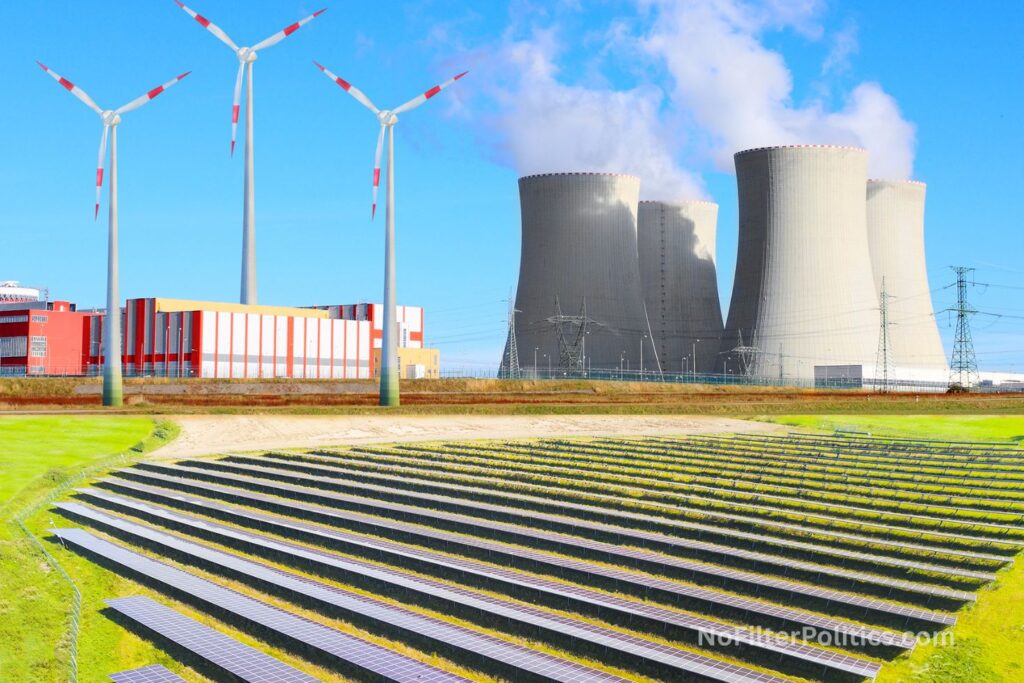
Pennsylvania is arguably the most contested case. It has abundant energy resources, an industrial base, and federal interest — yet its legislative landscape is deeply conflicted.
Policy Intent
Governor Josh Shapiro has proposed a package (sometimes nicknamed the “Lightning Plan”) including a clean energy standard (30 percent by 2030, 100 percent by 2050), community solar, grid resilience, and carbon pricing options. But those proposals face heavy legislative resistance. The state’s existing renewable energy law (AEPS) has not been meaningfully updated since 2004. Moves to join the Regional Greenhouse Gas Initiative have been delayed or struck down legislatively.
Investment Execution
Pennsylvania has not matched other swing states in large factory deals. Its clean energy footprint remains small relative to potential. Yet, federal funds via IRA grants, clean school bus programs, industrial efficiency upgrades, and localized solar/efficiency projects are flowing in. A hydrogen hub covering PA, Ohio, and West Virginia was awarded — though its climate value is debated since it relies on natural gas + carbon capture.
On-the-Ground Impact
You see solar development on reclaimed mine lands, rooftop installations, factory efficiency retrofits, and small grid projects. But major renewables or battery factories are rare. The state’s grid operator (PJM) is reforming queue rules, which could unlock stalled projects if they clear bottlenecks.
Political Framing
Shapiro talks energy jobs, emissions, and modernization. Republicans counter with cost, consumer protection, and protecting fossil fuel jobs. Fossil fuel and gas interests are strong in the state, pushing back on general mandates. Many clean energy promises remain in the aspirational stage, waiting for legislative approval or regulatory backing.
Caution Flag
The biggest risk is that symbolic promise remains promise: if the legislature refuses to act, projects stall or disappear. Pennsylvania is part way through a phase shift, but it has not yet fully broken from its fossil-centric energy identity. Unless state leadership pushes more aggressively and consistently, the symbolic will dominate the practical.
Cross-State Patterns and Key Insights
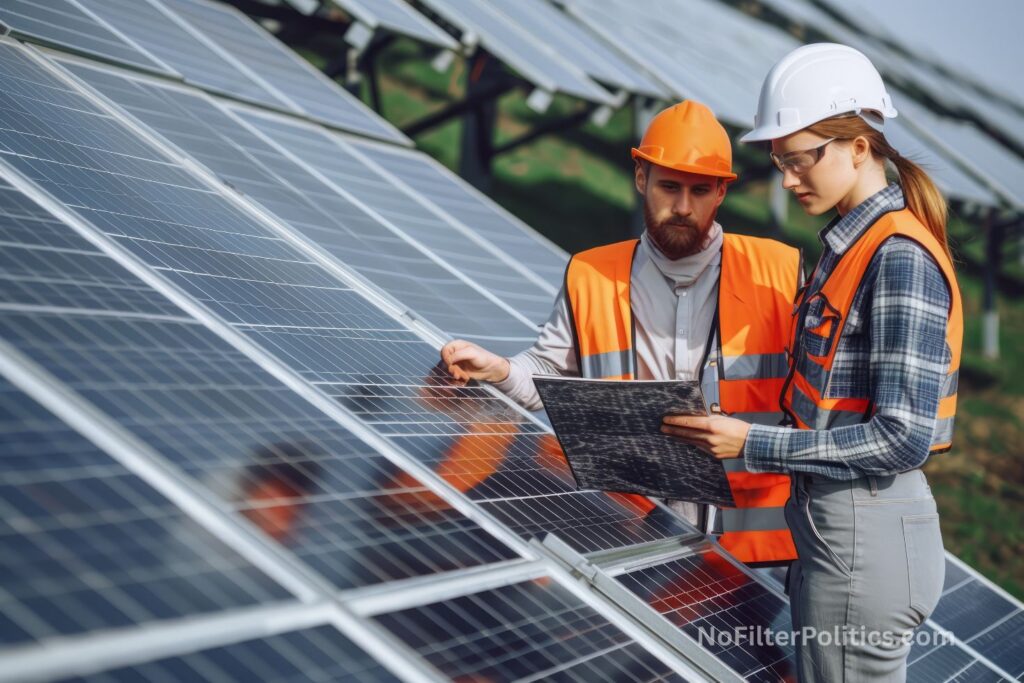
After reviewing all seven swing states, patterns emerge that help distinguish what differentiates substantive clean energy development from symbolic gestures.
1. The trifecta: law + investment + oversight is rare
The strongest states (Michigan, North Carolina to some degree) combine:
-
Binding laws or mandates (not just messaging).
-
Real factory and project investment.
-
Regulatory or oversight institutions (public utility commissions, interconnection rules) empowered to enforce change.
States relying on any two of the three often see partial or uneven results. The absence of regulatory backbone or political durability is a key weakness.
2. Manufacturing leads; generation lags
Almost universally, new investment is skewed toward factories, batteries, and supply chains. Generating clean power — via wind, solar, storage — is slower, mainly because of permitting, land use, community opposition, and grid constraints. Factories are comparatively easier (brownfield, industrial zones, incentives). But without matching generation and grid upgrades, factories can exist in isolation while the state’s energy mix barely budges.
3. Execution speed distinguishes real from symbolic
Announcing a multi-billion project is one thing. Breaking ground, hiring, shipping modules, producing gigawatt-hours — that’s another. Many “announced” projects still sit in limbo. A state that rapidly issues permits, allocates grids, clears land, and supports supply chains is more likely to deliver.
4. Political framing matters — but not as much as leverage
If clean energy is framed as a cultural or partisan issue, it invites sharp pushback. Where states recast it as economic development, reliability, or modernization, the politics soften. Smart leaders often talk jobs, not carbon. That said, framing isn’t enough: it must be paired with credible investment and institutional design to survive political shifts.
5. Public support is broad but shallow
Voters in swing states generally support EV incentives, renewables, and efficiency programs. But many don’t follow regulatory dockets or interconnection debates. That gives political operators space to emphasize or downplay narratives. The risk: if public benefit is invisible (e.g., no lower bills, no local jobs), initiatives feel symbolic.
6. Durability is the ultimate test
Success isn’t how many factories you announce in one term. It’s whether investment continues after leadership turnover, whether grid plans persist through crises, whether regulatory institutions are respected in multiple administrations, and whether infrastructure lives on beyond incentive periods.
Why This Matters (Beyond Rhetoric)
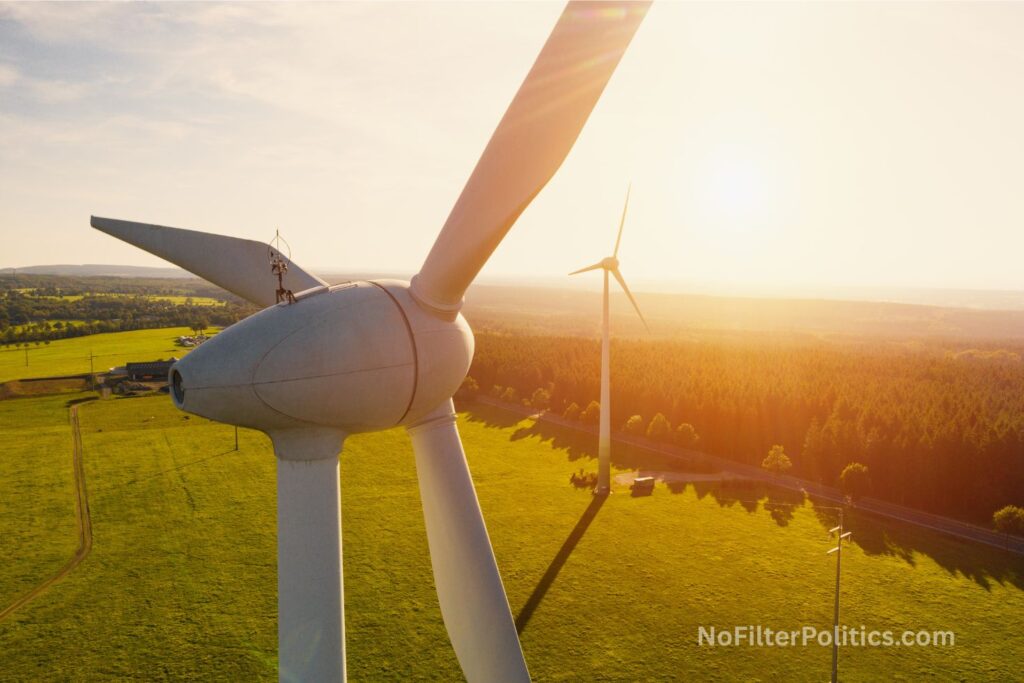
You might ask: so what if some states are more symbolic than substantive? The implications are deep:
National security and energy sovereignty
If U.S. production of batteries, solar panels, and critical minerals happens in swing states, you’re insulating strategic supply chains from geopolitical shocks. That’s real leverage. Symbolic projects abroad or in distant states don’t generate that resilience.
Local economies and community equity
When clean energy is built on the ground, communities get jobs, lease payments, tax base increases, and infrastructure. Symbolic policies that don’t deliver leave disappointment and cynicism.
Grid reliability and cost volatility
The cheapest energy is energy produced and stored close to demand. States that build renewables + storage + transmission reduce reliance on fuel markets. States that stall infrastructure remain exposed to price spikes. Over time, that can decide whether households/industries stay competitive.
Political trust and coherence
If voters repeatedly see “green promises” that don’t deliver, cynicism deepens, pushing more people to dismiss future efforts. On the other hand, sustained tangible benefits help build trust that climate policy can also be practical. Swing states are battlegrounds not just for elections, but for public confidence in governance.
Electoral stakes
Swing states decide presidential and congressional outcomes. If clean energy becomes a tangible performance metric (jobs, cost, reliability), it becomes a political liability or asset. Campaigns will shift from slogan to scoreboard. Politicians will have to answer: “What did you build, not just what you promised?”
How You Can Read Any Clean Energy Claim (A Playbook)
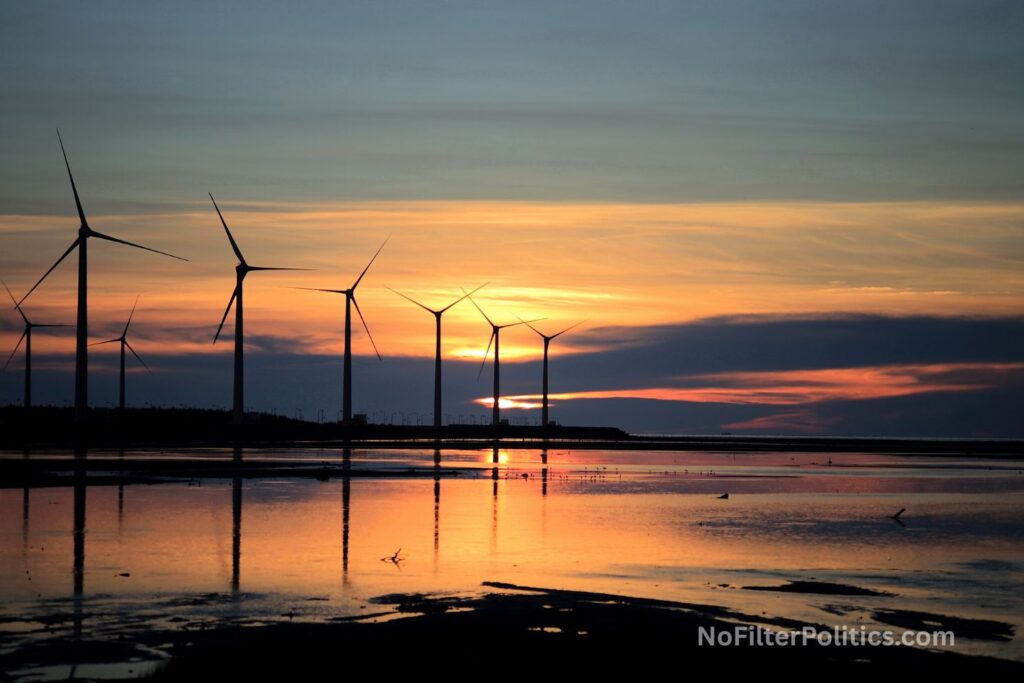
When you see a clean energy announcement in your state, here’s how to evaluate whether it leans more symbolic or substantive:
-
Check the statute behind it
Is it anchored in a law or just an executive memo or vision statement? -
Look for real investment backing
Are corporate letters of intent, land acquisition, and permitting approvals public? Or is it just aspirational? -
Watch for interconnection & grid commitment
If the power can’t flow from the project to users, the project is dead on arrival. -
Look for regulatory teeth
Are utilities forced or incentivized to retire carbon plants, adopt storage, upgrade lines? Or is it optional? -
Follow the timeline
Announcements that slip year after year without a shovel in the ground are often symbolic placeholders. -
Read the framing
If it’s mostly climate and ideology, be wary. If it’s infrastructure, jobs, modernization, that’s a more durable language. -
Track public visibility
Does your county see cranes, factories, transmission lines, job ads? Or just press releases?
If you calibrate claims against those criteria, you begin to separate the lasting wins from the superficial.
What Comes Next: Challenges & Watchpoints
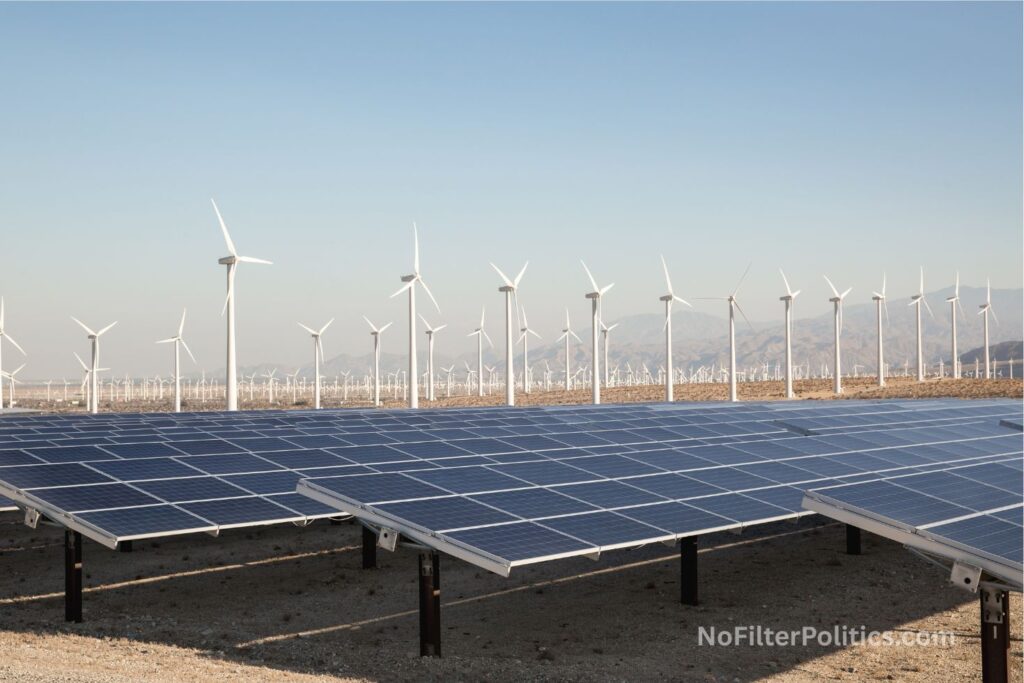
As of October 2025, a few critical stress tests lie ahead for clean energy in swing states:
-
Incentive rollbacks or policy reversals
Future Congresses may seek to cut or repeal parts of the IRA. States lacking solid policy backbones are most vulnerable. -
Grid bottlenecks and permitting inertia
Transmission and interconnection delays remain the Achilles’ heel of renewable growth nationwide. States that don’t streamline or modernize will be choked even amid strong demand. -
Regulatory capture and utility resistance
Utilities have vast power to slow transitions via rate design, lobbying, or contesting interconnection. States need regulatory independence and enforcement. -
Local opposition & social equity conflicts
Mining, land use, wildlife, water rights, community impact — especially in rural areas — can derail projects if not managed. Inclusive planning is essential. -
Economic cycles and global competition
Rising interest rates, supply chain shocks, or foreign competition (especially from China, Korea) could squeeze margins. Only projects with structural advantages will survive. -
Political turnover
Governors, legislatures, commissions may change. The most durable states are those where laws, institutions, and public expectations anchor the transition beyond any single administration. -
Public awareness and narrative control
If voters don’t see the payoff — lower bills, job growth, grid stability — the symbolic narrative will overshadow the substantive. Messaging shouldn’t be afterthought.
Conclusion: Verdict Across the Swing Belt
After more than two years under the IRA’s influence, swing states show a mixed but increasingly hopeful tapestry of progress:
-
Most substantive: Michigan — ambition in statute, deep industrial investment, visible project pipelines.
-
Strong pragmatic models: Georgia, North Carolina — major projects, decent regulatory support, effective framing.
-
High-potential but cautious: Nevada, Arizona — infrastructure, supply-chain investments, moderate policy backing.
-
Steady but conservative: Wisconsin — regulatory momentum, incremental infrastructure gains, limited legislation.
-
Ambitious but fragile: Pennsylvania — many clean energy promises and federal funds, but political inertia and institutional resistance slow the shift.
Across them, real gains in manufacturing, transmission, solar capacity, battery projects, and grid planning show that clean energy in swing states is not pure symbolism. But it’s also not guaranteed. Sustainment will require deeper regulatory commitment, robust public planning, and political discipline beyond next election cycles.
For citizens and watchers, the takeaway is powerful: don’t just listen to the rhetoric. Track the hardware — the factories, lines, interconnections, job postings — and ask whether those align with the talk. Clean energy in the 2020s will be won or lost at the intersection of policy, politics, and power lines.
If these swing states succeed, they will shift not just energy systems but national trajectories — because what gets built in Michigan, Georgia, Pennsylvania, and Nevada doesn’t stay local. It becomes the backbone of the next American energy era. And in a divided country, that reality may matter more than any campaign slogan.
References
- Aton, Adam. 2023. “How 2023 Changed the Way States Do Climate Policy.” E&E News, December 21.
https://www.eenews.net/articles/how-2023-changed-the-way-states-do-climate-policy/ - Chemnick, Jean. 2024. “Climate Law Sparks Swing-State Boom in Clean Energy Manufacturing.” E&E News, October 16.
https://www.eenews.net/articles/climate-law-sparks-swing-state-boom-in-clean-energy-manufacturing/ - Clean Energy Manufacturing in Swing States. 2024. “How Is Clean Energy Manufacturing Playing Out in Swing States?” Canary Media, November 4.
https://www.canarymedia.com/articles/clean-energy-manufacturing/how-is-clean-energy-manufacturing-playing-out-in-swing-states - “Majorities of Republicans and Democrats in Swing States Support Keeping Tax Credits for EVs and Clean Energy, Limits on Offshore Drilling.” 2024. PR Newswire, August 14.
https://www.prnewswire.com/news-releases/majorities-of-republicans-and-democrats-in-swing-states-support-keeping-tax-credits-for-evs-and-clean-energy-limits-on-offshore-drilling-302221488.html - Public Consultation. n.d. “Swing Six: Energy and Environment.” PublicConsultation.org.
https://publicconsultation.org/swing-six/energy-and-environment/ - Public Consultation. n.d. “Swing Six: Survey Methodology.” PublicConsultation.org.
https://publicconsultation.org/swing-six/ - “Swing Six — Energy and Environment.” 2024. Voices of Public Opinion, August 14.
https://vop.org/swing-six-energy-environment/ - U.S. Clean Energy Factories Bring Jobs to Red States as Tax Credits Face Cuts. 2025. Environmental Health News, May 22.
https://www.ehn.org/clean-energy-factories-bring-jobs-and-billions-to-red-states-as-tax-credits-face-cuts - “Americans on Clean Energy Tax Credits, Limits & the Environment (2025).” 2025. Voices of Public Opinion, April 17.
https://vop.org/americans-on-energy-and-the-environment-2025/ - “Georgia EV Plant Backed by the Climate Law Sparks Water War.” 2024. E&E News, September 24.
https://www.eenews.net/articles/georgia-ev-plant-backed-by-the-climate-law-sparks-water-war/ - “Climate Change Polling in Six Swing States.” 2023. Climate Nexus / George Mason University, June.
https://climatecommunication.gmu.edu/wp-content/uploads/2023/06/ClimateNexus_Memo_Annual_Climate_Change_State_Poll.pdf
State-Level and Statutory Sources
Georgia
- “Georgia Laws and Incentives — Alternative Fuels Data Center.” 2025. U.S. Department of Energy.
https://afdc.energy.gov/laws/all?state=GA - “Georgia EV Charging Station Tax Credit.” 2025. U.S. Department of Energy Alternative Fuels Data Center.
https://afdc.energy.gov/laws/5182 - “Clean Vehicle Related Tax Credits.” 2025. Georgia Department of Natural Resources Environmental Protection Division.
https://epd.georgia.gov/forms-permits/air-protection-branch-forms-permits/clean-vehicle-related-tax-credits - “Electric Vehicle Charger Rebate — Georgia Power.” 2025. Georgia Power.
https://www.georgiapower.com/residential/save-money-and-energy/products-programs/electric-vehicles/ev-rebates.html - “Georgia Electric Mobility Innovation Alliance Incentives & Policy.” 2025. Georgia.org.
https://georgia.org/mobility-policy-initiatives - “Georgia EV Policy.” 2025. Electrification Coalition.
https://electrificationcoalition.org/work/state-ev-policy/georgia/
Michigan
- “MCL — Section 460.1039.” 2025. Michigan Legislature.
https://legislature.mi.gov/Laws/MCL?objectName=MCL-460-1039 - “MCL — Section 460.949.” 2025. Michigan Legislature.
https://www.legislature.mi.gov/Laws/MCL?objectName=mcl-460-949 - “MCL — Section 460.1022.” 2025. Michigan Legislature.
https://legislature.mi.gov/Laws/MCL?objectName=mcl-460-1022 - Clean and Renewable Energy and Energy Waste Reduction Act (Act 295 of 2008, Michigan). 2008/2016. Michigan Legislature.
https://zeus-milenia.legislature.mi.gov/documents/mcl/archive/2023/April/mcl-Act-295-of-2008.pdf - “House Bill No. 4028.” 2025. Michigan Legislature.
https://legislature.mi.gov/documents/2025-2026/billengrossed/House/htm/2025-HEBH-4028.htm - “Executive Reorganization Order E.R.O. No. 2008-4.” 2025. Michigan Legislature.
https://legislature.mi.gov/%28S%28ok5pohzxjgruai45akjswu45%29%29/documents/mcl/pdf/mcl-E-R-O-No-2008-4.pdf
North Carolina
- House Bill 951 / SL 2021-165 (Energy Solutions for North Carolina). North Carolina General Assembly.
https://www.ncleg.gov/BillLookup/2021/h951 - House Bill 951 — Ratified Bill PDF (H951-v5). North Carolina General Assembly.
https://www.ncleg.gov/Sessions/2021/Bills/House/PDF/H951v5.pdf - Schengber, John. Key Provisions of North Carolina’s New Energy Bill, HB 951. 2023. UNC School of Law.
https://law.unc.edu/wp-content/uploads/2023/05/Schengberg.pdf
Nevada
- “Renewable Portfolio Standards — Public Utilities Commission of Nevada.” 2025. PUCN.
https://puc.nv.gov/Renewable_Energy/Portfolio_Standard/ - “Nevada Legislature Research Division. Renewable Portfolio Standards (Staff Report, May 2020).” 2020.
https://www.leg.state.nv.us/Division/Research/Documents/RenewablePortfolioStandards.pdf
Wisconsin
- Wisconsin Statutes § 196.378. “Renewable Portfolio Standard Authorization.”
https://docs.legis.wisconsin.gov/statutes/statutes/196/378 - 2005 Wisconsin Act 141. Energy Efficiency, Renewable Resources & Energy Policy Act.
https://www.wisconsin.edu/capital-planning/download/reference/Wisconsin_Act141_InformationMemorandum.pdf - Wisconsin Office of Sustainability and Clean Energy. Clean Energy Plan 2022.
https://osce.wi.gov/Documents/SOW-CleanEnergyPlan2022.pdf - Wisconsin Statutes § 1.12. “State Energy Policy Goals.”
https://law.justia.com/codes/wisconsin/chapter-1/section-1-12/ - Wisconsin Public Service Commission. “RPS Renewable Facility Certification.”
https://psc.wi.gov/Pages/ServiceType/Energy/Renewables/RpsFacilityCertification.aspx - Wisconsin Public Service Commission. “RPS Compliance and History.”
https://psc.wi.gov/Pages/ServiceType/Energy/Renewables/RpsCompliance.aspx - Wisconsin Statutes § 66.0401. “Local Government Regulation of Solar and Wind Energy Systems.”
https://wisconsinlandwater.org/members-hub/conservation-resources/climate-resilience/renewable
Pennsylvania
- Act No. 213 of 2004 (Alternative Energy Portfolio Standards Act). Pennsylvania General Assembly.
https://www.palegis.us/statutes/unconsolidated/law-information?actNum=0213&sessInd=0&sessYr=2004 - 52 Pa. Code Chapter 75 (Alternative Energy Portfolio Standards Regulations).
https://www.pacodeandbulletin.gov/Display/pacode?file=%2Fsecure%2Fpacode%2Fdata%2F052%2Fchapter75%2Fchap75toc.html - 52 Pa. Code § 69.1806 (Alternative Energy Portfolio Standard Compliance Procurement).
https://www.law.cornell.edu/regulations/pennsylvania/52-Pa-Code-SS-69-1806 - Pennsylvania Public Utility Commission. “AEPS Rulemaking and Act Responsibility.” Pennsylvania Bulletin, Vol. 38, No. 51 (2008).
https://www.pacodeandbulletin.gov/Display/pabull?file=%2Fsecure%2Fpabulletin%2Fdata%2Fvol38%2F38-51%2F2286.html - “About AEPS.” n.d. PennaEPS Program Overview.
https://pennaeps.com/about/ - Pennsylvania Statutes Title 73 P.S. § 1648.2 (Alternative Energy Portfolio Standards Definitions).
https://codes.findlaw.com/pa/title-73-ps-trade-and-commerce/pa-st-sect-73-1648-2/ - Pennsylvania Senate Bill 181 (2023). Proposed Amendment to AEPS Definitions.
https://www.legis.state.pa.us/cfdocs/legis/li/uconsCheck.cfm?act=181&sessInd=0&yr=2023
Discover more from Timothy Alexander
Subscribe to get the latest posts sent to your email.